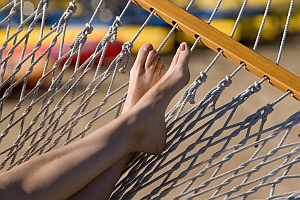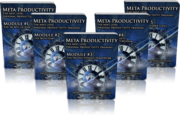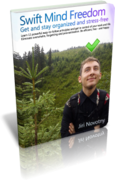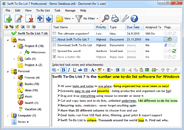 Since I decided to become an expert on productivity and time management and started studying these topics, I’ve run into many examples of counter-intuitive advice that actually works.
Since I decided to become an expert on productivity and time management and started studying these topics, I’ve run into many examples of counter-intuitive advice that actually works.
I find it fascinating that whenever you want to really understand something – anything – you will discover that the real truth behind it is usually counter-intuitive.
So, here are 5 very useful productivity tips that you can immediately use.
1. Make sure your work is left unfinished
Before you take a break, make sure that your work is left unfinished. This will help you to zap right back into the flow once you get back. Your brain craves completion.
This is actually a famous writing tip from Hemingway – he always left the last sentence unfinished, so he could pick up again easily the next session.
Once you finish something and want to take a break, you could also start working on the next thing just right before you take the break, but it’s not nearly as powerful as stopping when you are 80%, 90% or even 99% done, and then taking the break before completing it to 100%.
2. Begin with the least urgent task
The tendency is to wait until something becomes urgent – and then do it. That’s bad, because most of your urgent tasks were non-urgent once.
The idea is to complete your tasks before they become urgent. And the only way to do that is to work on the least urgent tasks first.
This won’t help you to eliminate genuine emergencies, but your overall emergencies might drop by up to 90%, and the stress along with them. Your efficiency will increase, and predictability and reliability of our your output as well.
3. Schedule the fun first
We all have trouble with procrastination. There are many causes of procrastination, but one effective technique of reducing it is to schedule the fun things first, and then work only between these blocks of fun time.
This way, your reptile brain won’t feel threatened when you want to do the work, because it will know that the fun is guaranteed.
So – schedule the fun first, and then work in the “free” time.
This tip comes from The Now Habit book. If you are struggling with procrastination, read my detailed summary of The Now Habit.
4. Work less to get more done
By setting a time limit on your work sessions, you will get more done than if you have all the time in the world. Instead of beating yourself up because you are procrastinating and having trouble getting started, you will be able to jump out of the inertia and soon feel eustressed about finishing your stuff in the allocated time.
Limit both your work sessions (60-120 minutes), and your weekly output (40 hours).
It’s interesting that scientific evidence shows that working more than 40 hours is not sustainable in the long-term anyway; and yet, in the Do More Faster book (which is a collection of interviews with startup founders) almost everyone is working 14-16 hours a day for many months. How is that possible? I would argue that if you love what you are doing, it’s a bit different. But still, one has but to wonder what the real productivity of these entrepreneurs are.
Working hard is not just about the quantity (time), but about quality. To increase the quality, you need to decrease the quantity. There is a sweet spot for every one of us. Experiment with limits to find it.
5. If everything is on fire, go for a walk
Sometimes you just get stuck during your work session. For some unfathomable reason, the more urgent and important something is, the harder is for you to make progress.
If you’ve hit a wall, you need to break the downward spiral of procrastination and bad feelings. (More on breaking bad behavioral patterns in Outsmarting Yourself for Success.)
If you can’t push yourself to do something, just stop the losing battle and go for a walk. Chances are, on your return, you will jump on that task with unexpected eagerness.
There are many reasons why this works. One simplistic explanation is that when you walk, your body is in movement. When you come back, you have to sit down and stop your body – but since things in motion tend to stay in motion, all that energy will get transferred into the work. Plus, when you walk, you can’t work even if you want to – and this makes you realize how much you actually want to work.
What works for you?
If you have some productivity tip that you’ve discovered (counter-intuitive or not), please share it with me and others in the comments below. I am fascinated by these things.
- By Jiri Novotny+, the obsessed author of task management software for Windows, Swift To-Do List. Jiri’s life quest is to become productivity and achievement world-class expert to empower others, and his current main goal is to create the best task and notes organizer for Windows.
PS: If you could use task and notes organizer for Windows, then definitely download free 30-day trial version of Swift To-Do List that I’ve been working on for over 7 years now. You will be amazed.






I think that I’m guilty of scheduling the fun first. Usually I work 16 hours/day or something like that, and whenever I do the fun stuff first, my productivity tends to be much lower. Whenever I do the hard things first – I finish faster and I get a lot of things done.
Hi Fadi!
Actually, by the fun stuff, I mean completely non-work related things, not the easy tasks.
Also, I don’t think that you should actually do them in the day before the important work-stuff (more on that in Be Successful First Thing in the Morning), but you should schedule them before you schedule the work stuff, so when you are scheduling the work stuff, the fun is already guaranteed and scheduled.
Those are great tips – I’m definitely guilty of ignoring points 3 & 4. I will change this.
Interesting side note on point 2. There’s a volunteer group that does invasive weed removal in Kings Park, Perth Western Australia. Introduced weed species were destroying this natural environment. The authorities’ methods had failed miserably – the situation was getting worse, not better.
The volunteer group turned weed removal on its head – they start where the weeds are least a problem, and work towards the worst infestations. And just as with your point about doing the least important tasks first, this method works.
Where the weeds are worst already it’s not going to get any worse if you don’t try to remove them now – it’s already as bad as it gets. But the weeds spread outwards from the edges of the lightly infested areas – so that’s the place that needs attention and you get the most results for the least work.
It works in your own garden too :)
Thanks for this wonderful tips Jiri. I really appreciate numbers 4 and 5 but unfortunately some people are still blinded by the the idea of the more time you spent the better. I believe productivity is measured by the results not by the number of hours you spend on a certain task.
Hi Maria – you are spot on. Productivity should be indeed measured by results, and results only – not by time spent. The time spent is irrelevant – or, actually, its not – the less time spent, the better!
Going for a walk is my favorite on this list :) Overall, a short rest during the workday can be really productive. A break might give the mind a reboot, so that you can then tackle the problem with a fresh look. If you’re interested, check out our blog post where we shared 6 ways of making short rest really work for you: http://www.wrike.com/blog/How-Increase-Productivity-Work-6-Mind-Switching-Hacks